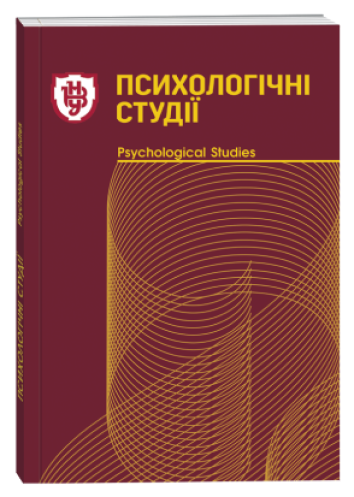FEATURES OF THE DEVELOPMENT OF ANALYTICAL AND CRITICAL THINKING IN HIGH SCHOOL STUDENTS
DOI:
https://doi.org/10.32782/psych.studies/2024.1.10Keywords:
analytical thinking, critical thinking, logical thinking, high school students, young men, empirical researchAbstract
The article is dedicated to an important issue concerning the psychological aspects of the development of analytical and critical thinking in high school students. The essence, functions, and types of thinking are examined, highlighting that critical and analytical thinking are vital aspects of cognitive processes. It is clarified that developed critical thinking skills empower individuals to accurately assess the reliability of information and make independent decisions, with analytical thinking serving as the ability to understand the essence of a complex problem by identifying connections between its components. The adolescent age is identified as a sensitive period for the development of analytical and critical thinking. The main characteristics of analytical thinking in young men are revealed, including the ability for logical operations, a creative approach to solving complex cognitive tasks, and independence in decision-making. Signs of critical thinking in high school students are elucidated, with objectivity in thinking, the ability to analyze, compare, and evaluate information sources, and the skill of formulating well-founded conclusions taking precedence. Throughout the research, the assumption is formulated that there is a connection between analytical, logical, and critical thinking in high school students. The hypothesis is empirically tested using psychodiagnostic methods: the «Numeric Series» analytical thinking research method by Krepelin, the «Complex Analogies» logical thinking research method by E. A. Korobkova, and the «Critical Thinking» test by L. Stark adapted by O. L. Lutsenko. The results reflecting the levels of formation of the investigated types of thinking in young men are presented in tables and analyzed. By applying the method of correlation analysis, a direct statistically significant relationship between analytical, logical, and critical thinking in high school students is established. The feasibility of developing a special program for the development of analytical and critical thinking in young men for use by school psychologists is determined.
References
М’ясоїд П.А. Загальна психологія: навч. посіб. 3-тє вид., випр. К.: Вища шк., 2004. 487 с.
Демченко Ю.М., Нікітіна О.О. Формування основних мисленнєвих операцій у дітей дошкільного віку засобами гри. Наукові записки. Серія: Педагогічні науки. 2020. № 185. С. 93–98.
Терно С.О. Теорія розвитку критичного мислення (на прикладі навчання історії): посіб. для вчителя. Запоріжжя: ЗНУ, 2011. 105 с.
Пометун О.І. Критичне мислення як педагогічний феномен. Український педагогічний журнал. 2018. № 2. С. 89–98.
Площинська Т.Ю. Обґрунтування поняття «навички аналітичного мислення майбутніх офіцерів-прикордонників». Інноваційна педагогіка. 2021. Вип. 37. С. 251–255.
Котов К. Що таке критичне мислення та чому воно таке важливе? Tokar: вебсайт. URL: http://surl.li/musgy (дата звернення 22.02.2024).
Проблеми педагогіки мистецтва: зб. наук.-метод. ст. / упоряд. М.А. Михаськова. Хмельницький: ХГПА, 2018. 120 с.
Булах І.С., Алєксєєва Ю.А. Моральне зростання підлітків: сучасні технології консультативної діяльності: навч. посіб. Київ: Вид-во НПУ імені М.П.Драгоманова, 2010. 223 с.
Банько В.В. Розвиток критичного мислення на уроках української мови та літератури: метод. реком. Воєгоща: ЗОШ І-ІІІ ступенів, 2019. 96 с.







